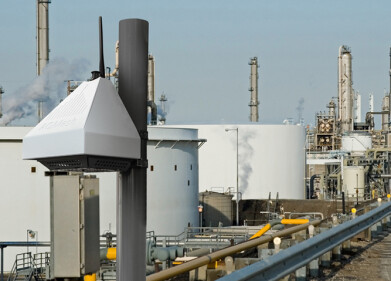Air Monitoring
What is the Euro 6 Emission Standards?
Jul 25 2015
The Euro 6 emission standards are the latest incarnation of the legislation imposed by the EU on the amount of harmful emissions that can be emitted by new cars. In particular, the regulations target the amount of nitrogen oxide (NOx), hydrocarbons NMHC and THC and carbon monoxide (CO) that are produced by both petrol and diesel vehicles. Furthermore, they also focus on the particulate matter (PM) which these cars spit into the atmosphere and which can cause health problems.
By complying with these regulations, new cars can minimise their carbon footprint, thus helping the environment and the air quality of those around. An added bonus of compliance is that cars can often achieve better fuel economy, as well.
The History of EU Emission Standards
The emission standards were first introduced in 1992 with the Euro 1, which placed the first ever restrictions on the output of manufactured cars. These were followed by Euro 2 in 1997, Euro 3 in 2000, Euro 4 in 2006, Euro 5 in 2009 and Euro 6, which will come into effect in September of this year.
The amount of CO, NOx and PM that are allowed to be emitted from newly manufactured cars has steadily decreased over the years. Below is a table with all of the relevant data from each year, corresponding to both petrol and diesel cars.
|
Emissions Standards |
Date |
Petrol CO allowance |
Petrol NOx allowance |
Petrol PM allowance |
Diesel CO allowance |
Diesel NOx allowance |
Diesel PM allowance |
|
Euro 1 |
1992 |
2.72 |
- |
- |
2.72 |
- |
0.14 |
|
Euro 2 |
1996 |
2.2 |
- |
- |
1 |
- |
0.08 |
|
Euro 3 |
2000 |
2.3 |
0.15 |
- |
0.64 |
0.5 |
0.05 |
|
Euro 4 |
2006 |
1 |
0.08 |
- |
0.5 |
0.25 |
0.025 |
|
Euro 5 |
2009 |
1 |
0.06 |
0.005 |
0.5 |
0.18 |
0.005 |
|
Euro 6 |
2015 |
1 |
0.06 |
0.005 |
0.5 |
0.08 |
0.005 |
As you can see, the amount of CO, NOx and PM that has been allowed has been slashed dramatically over the years, especially in diesel cars. Whereas NOx was not regulated by the first two standards, in 2000 a limit of 500mg/km was imposed – this has been reduced to a mere 80mg/km in the current legislation. Petrol vehicles, meanwhile, remain at the same level as 2009 – 60mg/km.
What this Means for You
On a personal level, the new regulations shouldn’t mean an awful lot to the consumer – unless you own an older diesel vehicle. While new diesel models do comply with the regulations and are almost as environmentally-friendly as their petrol counterparts, older models still produce alarming amounts of pollution.
In an effort to combat this, many local councils and boroughs are imposing regulations of their own in a bid to deter drivers from using them. For example, Islington council in London already introduced a surcharge of £96 per annum for diesel car owners in April of this year. Meanwhile, the city as a whole is considering naming London as an Ultra Low Emission Zone by charging diesel vehicles an additional £10 to enter the city, on top of the already high congestion charges.
Meanwhile, across in Wales, the government are attempting to reduce pollution by making drivers better informed of the environment around them and of the state of traffic in upcoming zones. To learn more about the initiative, check out the article Pulling it All Together - Swansea Traffic Management Plan.
Digital Edition
IET 34.2 March 2024
March 2024
Gas Detection - Biogas batch fermentation system for laboratory use with automatic gas analysis in real time Water/Wastewater - Upcycling sensors for sustainable nature management - Prist...
View all digital editions
Events
Apr 17 2024 Guadalajara, Nexico
Apr 18 2024 Shanghai, China
Apr 22 2024 Hannover, Germany
Apr 22 2024 Marrakech, Morroco
Apr 23 2024 Kuala Lumpur, Malaysia


















